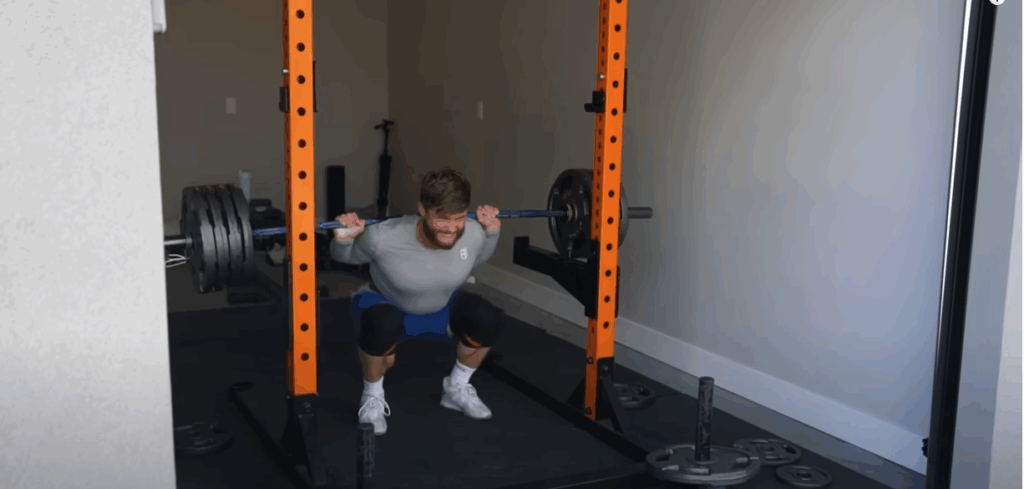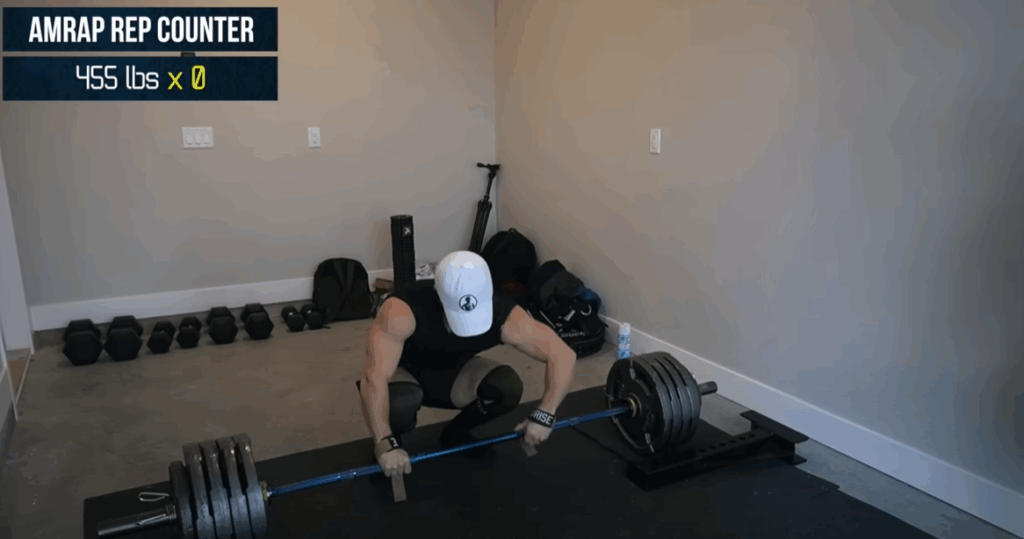Testing My Strength: Squat, Bench, and Deadlift Performance After Six Months of Training
Every serious lifter hits a point in their journey where testing their one-rep max becomes more than just a physical trial—it’s a way to assess progress, refine technique, and understand where they stand in their training. After six months of consistent work, I decided it was time to see how much strength I had regained—and hopefully surpassed—since recovering from a lower back injury that had sidelined me for quite some time.
This time around, I tested my squat, bench press, and deadlift using an AMRAP (As Many Reps As Possible) method, instead of traditional 1-rep max testing. Here’s a breakdown of how things went, what the numbers revealed, and the lessons I’ve learned along the way.

Squat Progress: From Recovery to Personal Record Territory
Six months ago, I managed a single rep at 405 pounds—four plates—on the squat. While not a true maximum effort, it was my first heavy squat since my injury and served as a baseline to rebuild from. Fast-forward to the present, and I decided to load up 405 again, but this time, I was aiming for reps.
I hit six clean reps with strong form. Based on AMRAP conversion tables, that suggests my current estimated one-rep max is in the neighborhood of 470–480 pounds. While these calculators become less accurate as reps increase, this result indicates significant strength improvement.
What impressed me most wasn’t just the weight lifted, but the execution. My bracing was tight, my descent stayed controlled, and I consistently hit depth without wasting energy going too deep. The bar path remained stable, my hips didn’t shoot up, and I used my glutes and quads effectively through the sticking point. From a technical standpoint, this was likely my best set of squats in years.
Bench Press: Surpassing Previous Personal Bests
The next day, I shifted focus to the bench press. I loaded up 315 pounds, with a goal of getting five to six reps. To my surprise, I cranked out eight reps with a slight pause on each—no touch-and-go.
Using standard formulas, this puts my estimated one-rep max around 390 pounds, though I personally believe the true number is closer to 365–375 pounds, given the calculator’s tendency to overestimate with higher rep counts. My heaviest double leading into this session was 345, and that gives more credibility to the conservative estimate.
This AMRAP was particularly satisfying because I’ve only ever hit eight reps with 315 pounds using a quicker tempo. The brief pause on each rep and proper bar path (slight arc from chest to lockout) reinforced that my pressing mechanics have matured. I’ve also learned that allowing the bar to sink slightly into the chest can give me an extra boost off the bottom—something that works for me personally and is still within the rules for powerlifting.

Deadlift: Room to Improve
After a rest day, I tackled the deadlift. I chose 445 pounds for my AMRAP set, hoping for at least five reps. Unfortunately, this set didn’t go as planned—I only managed three reps, translating to an estimated one-rep max of 495 pounds, which is only a slight bump from my previous best of 485.
While I was disappointed, I suspect accumulated fatigue from the prior heavy sessions affected my performance. The deadlift demands a lot neurologically, and I felt like I had the physical strength but lacked the mental drive during the set.
However, I had recently pulled 495 for two solid reps, which gives me confidence that my true max is likely closer to 510 pounds. This slight underperformance has become a motivational tool: it highlights where my next training cycle should focus—particularly in mobility and positioning for sumo deadlifts. I’ve noticed tightness in my hips and hamstrings that affects my ability to set up properly. My plan now includes post-training mobility work targeting adductors, groin, and hamstrings to make my wide stance more comfortable and efficient.
The Takeaways: What You Can Learn From My Testing
Even using the most modest estimates, I’ve added over 100 pounds to my total in just six months of focused training. Here are three major factors that contributed to that progress—and how you can apply them to your own training.
1. Muscle Memory is Real
I had previously built a high level of strength before injury forced a long break. Once I returned to structured training, my body responded quickly. This rebound effect—known as muscle memory—allowed me to rebuild strength much faster than it took to build it initially.
For anyone returning to training after time off due to injury, illness, or even the pandemic, this should be encouraging. Your past training efforts weren’t wasted—they’re stored in your nervous system and muscle fibers, ready to be reactivated.
2. Confidence Is a Critical Component
When coming back from injury, your mindset matters just as much as your programming. In one study I referenced in my injury comeback video, researchers found that self-belief was crucial for a successful return to heavy lifting.
For me, gradually ramping up my loads and reinforcing proper technique gave me the confidence to push harder. Once I shook off the mental blocks associated with my previous injury, my strength gains accelerated.
3. Training with Intelligence, Not Ego
Over the years, I’ve developed what I’d call a more mature approach to lifting. I don’t chase numbers for the sake of pride. Instead, I prioritize movement quality, smart progression, and listening to my body.
During this last training phase, I stuck to a high-frequency, full-body routine, which allowed me to hit each lift multiple times per week with varying intensity. Because of gym closures, I was limited to mostly barbell movements, which actually ended up benefiting me. Without access to machines, I had to rely more on compound free-weight lifts—movements that have the greatest carryover to strength development.
Lifting heavy consistently, while maintaining good form and managing fatigue, was the key.

What’s Next? Powerbuilding with Purpose
Now that I’ve completed this testing phase, I’ve started working on a new training program. It’s a powerbuilding hybrid—roughly a 50/50 split between strength and hypertrophy, maybe slightly favoring the strength side.
Before releasing it publicly, I’ll be running it through myself and a few coaching clients to ensure it’s as effective as possible. If you’re interested in being the first to access it, make sure you’re subscribed to my newsletter where I release free programming and updates.
Final Thoughts
Testing your maxes isn’t just about chasing numbers—it’s a way to reflect on your training, identify areas for improvement, and reignite motivation. Whether you’re recovering from a setback or simply looking to level up, smart programming, a resilient mindset, and technical consistency can take your strength to new heights.
So keep lifting, keep learning, and remember—progress is rarely linear, but it’s always possible.



